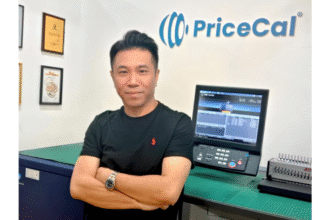What are some of the biggest disconnects you’re seeing between how travel brands market themselves and how today’s travellers are actually making booking decisions?
Our report focused on uncovering the top priorities and existing strategies that travel marketers are employing, based on their current perceptions of today’s consumer landscape, while also identifying the reality of the market and what travellers are actually looking for.
One of the biggest disconnects we uncovered is the gap between how brands are marketing and how travellers are making decisions. While over 80% of travel marketers identified customer growth as their top priority, many are still heavily relying on online paid ads to drive bookings. But the traveller’s path from discovery to purchase is far more nuanced. Only 18% of Australian and 27% of Singaporean travellers say they trust online ads when discovering new travel options. Instead, they are leaning into more trusted sources like comparison and review sites, word-of-mouth, and influencer content when deciding where to go, which airline or accommodation to book, and what experiences to try.
Our data also reveals that over 60% of travellers in APAC trust word-of-mouth referrals, and more than 50% of travellers in Singapore and China look to cashback and loyalty program sites for inspiration. This highlights a real need for travel marketers to diversify their marketing channels throughout the customer journey and invest in high-trust touchpoints.
At the end of the day, trust is the new currency in travel marketing. Brands that build it early — and nurture it across the journey — will win long-term loyalty.
How are creators and affiliates influencing traveller decision-making and building trust, particularly in an era where peer-led content often outweighs traditional advertising?
Creators and affiliates have become essential in shaping brand trust and driving consideration – especially in travel. The reason is simple, creators serve as credible, relatable voices that bridge the gap between brands and audiences.
In the APAC region, today’s travellers are highly connected and increasingly discerning. Traditional advertising often falls short in creating the kind of personal resonance that drives modern booking decisions. Instead, influencer marketing and word-of-mouth now lead the way. Our research found that more than half of Singaporean travellers say they’re likely to try a new travel product or service because of an influencer recommendation, underlining the growing role creators play in shaping travel choices today.
Creators don’t just promote; they inspire and inform – offering culturally relevant, firsthand experiences that build genuine confidence in a destination. Affiliates like comparison and cashback sites and deal aggregators then convert that interest into measurable bookings as travellers today have also become more price-sensitive and they value the incentives offered by these trusted platforms.
In China, over 50% of travellers have actually made a purchase because of an influencer recommendation. For brands, this means that partnering with the right creators and affiliates isn’t just about increasing reach – it’s also being able to drive qualified actions.Ultimately, this evolution allows travel marketers to move beyond superficial impressions toward strategies rooted in authenticity, influence, and long-term loyalty.
As travel brands look to grow in the competitive APAC landscape, how is moving beyond traditional advertising reshaping how they connect with today’s travellers?
As we see travel brands looking to grow in the competitive APAC landscape, moving beyond traditional advertising is becoming a key strategy in reshaping how they connect with today’s travellers. This year, the revenue in the travel & tourism market is projected to reach US$305.36bn, with the hotels market having the largest volume.
What’s really exciting is how much of this growth is being fueled by shifting travellers’ behaviours and trends. We are seeing more people plan trips based on food experiences, local recommendations and even AI-based itineraries, which is a clear indication that traditional advertising alone just isn’t enough to influence these decisions anymore.
In fact, the marketing funnel has evolved from a simple linear path into more of a circle — or better yet, a continuous journey. It goes beyond awareness and purchase to include discovery, research, engagement, conversion, retention, and most importantly, advocacy.
Advocacy happens when customers become your strongest marketers by sharing their experiences on social media, writing reviews, and recommending you to friends. This word-of-mouth doesn’t just feel good, it actively brings new customers back into the discovery phase, sparking fresh growth.
Thus, this post-purchase behaviour matters more than ever.
As we head into peak travel season in the summer, what key insights or takeaways from the report should marketers act on immediately to maximise the impact?
As we gear up for high-intent travel periods like summer and year-end, there’s a big opportunity for brands to move fast and market smarter.
Travellers today expect more than generic promotions — they want personalised, meaningful experiences at every touchpoint. And they’re looking for trusted voices to help guide their decisions.
That means now is the time to:
- Collaborate with local creators and affiliates
- Launch community-driven campaigns that showcase real stories
- Deliver platform-native content tailored to specific audiences
Our report shows that 63% of travellers in Singapore and 75% in China trust word-of-mouth when exploring travel options. That’s a signal to lean into advocacy and storytelling, not just transactional messaging.
Brands that act early — by building awareness and trust before the booking window opens — are the ones that will stay top of mind when travellers are ready to hit “book.”
















